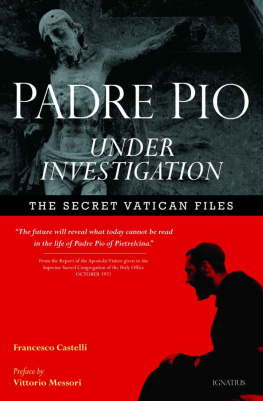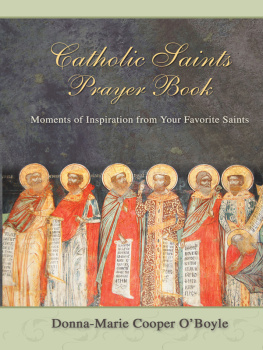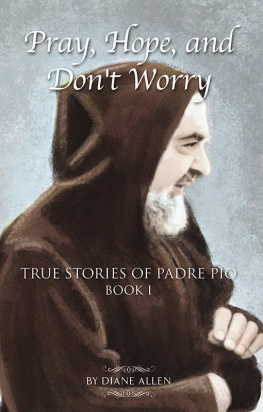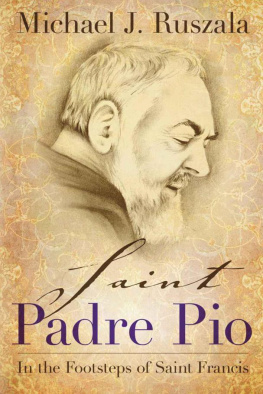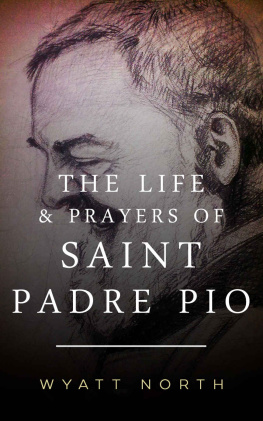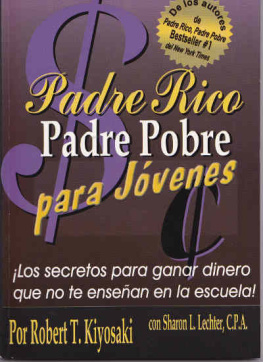PADRE PIO
UNDER
INVESTIGATION
Francesco Castelli
PADRE PIO
UNDER
INVESTIGATION
The Secret Vatican Files
Foreword by Vittorio Messori
Translated by Lee and Giulietta Bockhorn
IGNATIUS PRESS SAN FRANCISCO
Original Italian edition:
Padre Pio sotto inchiesta: L Autobiografia segreta
2008 by Edizioni Ares, Milan
http://www.ares.mi.it
Cover photograph (top): Stone Crucifix, Lisbon, Portugal.
Photograph by John Herreid
Cover photograph of Padre Pio in 1919
and also other photographs (in photo insert)
The Voice of Padre Pio, San Giovanni Rotondo, Italy
Cover design by John Herreid
2011 by Ignatius Press, San Francisco
All rights reserved
ISBN 978-1-58617-405-7
Library of Congress Control Number 2010931419
Printed in the United States of America
The great saints... are called to withstand
the temptations of a particular time
in their own skin,... in their own souls,
... to bear them... for us ordinary souls,
and to help us persist on our way to the One
who took upon himself the burden of us all .
Joseph Ratzinger
CONTENTS
Foreword: I Am a Mystery to Myself
by Vittorio Messori
FOREWORD
I Am a Mystery to Myself
An exceptional document
The future will reveal what today cannot be read in the life of Padre Pio of Pietrelcina. These words, written in January 1922 by Msgr. Raffaello Carlo Rossi, Bishop of VolterraInquisitor in San Giovanni Rotondo by order of the Holy Office in June 1921, when Padre Pio was just thirty-four years oldwere then certainly a way to cover his back, and avoid locking in too small a cage a man and a situation which to the prelate, sent on a reconnaissance mission to evaluate the stigmatic friar and the environment around him, had seemedas we shall seecertainly out of the ordinary, but also substantially healthy and sincere. But those words were, at the same time, too easy a prophecy.
When we read them nowwith Padre Pio having been proclaimed a saint in 2002, after many disagreements and vicissitudeswe cant help smiling. We now know very well what the future has said about that friar, rich since childhood in extraordinary charisms, but alsoand I would say necessarilysubjected to a special attention on the part of the Church, and to a severity that often seemed excessive.
And we know it because, despite his humility and his reserve, the mission to which he had been called had an enormous echo, crossing all borders and channeling millions of pilgrims toward San Giovanni Rotondo. An event which, however one may have judged it, had captured the attention of everyone, believers and non-believers, helping considerably to strengthen the faith of many.
We should then know practically everything about him, since much has been written, both at a scholarly level and for the general public. But it is not so, as this volume by historian Fr. Francesco Castelli demonstrates. The book collects and analyzes what the jargon calls the Votum (that is, the final report of Msgr. Raffaello Carlo Rossis inquiry, conducted, as noted, on behalf of the Holy Office), and other shorter texts like the Chronicle of Padre Pio , written by one of his spiritual directors, Fr. Benedetto Nardella of San Marco in Lamis.
These are almost entirely unpublished texts, and they are of remarkable documentary value: Since they were declared classified at that time, they didnt appear among the sources in the archives of San Giovanni Rotondo, and for this reason they were ignored for a long time. But in 2006, as is well known, Benedict XVI gave free access to the archives of the former Holy Office up until the year 1939, making it possible at last to examine what the archives held on the subject of the friar from Pietrelcina. The consequence of all this was the revival of the seemingly inexhaustible research on this saint, who has been long-loved and at the same time, in some circles, so discussed and looked upon with arrogant diffidence. These past few years have seen the argumentsboth in favor and against the stigmatic Capuchinrekindle, arguments that had apparently died down with the canonization.
Thus a volume by the Jewish historian Sergio Luzzatto, Padre Pio. Miracoli e Politica nellItalia del Novecento , has caused great commotion. The book examines some documents kept in the former Holy Office, in particular the charge, attached to the Lemius Report, leveled by two pharmacists. The author, while briefly mentioning Monsignor Rossis Visitation, meant to cast an ambiguous light on the stigmatic friar by relying on his detractors, first and foremost Father Gemelli. Luzzatto carries out his maneuver by insinuating doubts about the veracity of the stigmata, suggesting it would be impossible to rule out not only psychosomatic causes, but even chemical interventions to create and maintain them. According to this author, a great part of the Padre Pio phenomenon would actually be the fruit of the tight intertwining occurring at that time between the Church and Italian politicsin particular the phenomenon of clerical fascism, coupled with the fanaticism of the Catholic masses, which, according to Luzzatto, from the very beginning would have made the Capuchin untouchableand with his own (at least partial) consent.
I have already noted elsewhere that Luzzattos way of reading the events, by making use of historical and political, when not ideological, categories, is absolutely insufficient to describe and penetrate phenomena like the ones at issue, which, while belonging to history, at the same time transcend history. Only faithwhich is not fanaticism or sentimentalism, as it would be sometimes convenient to portray itgrants that vision of the world, and hence of history, which allows for the hypothesis of God and accepts all of its consequences, including the one that he may work wonders in a person like Padre Pio and through him may powerfully intervene in the world.
Saverio Gaeta and Andrea Tornielli have accurately and vigorously answered Luzzatto in their volume Padre Pio. Lultimo sospetto , in which they highlight not only the historians numerous inaccuracies, but also his genuine mistakes and his frequent manipulation of the texts he uses to confirm his thesis. Gaeta and Tornielli did this by using various sources, and by quoting a few passages from the previously mentioned Holy Office inquiry, especially when countering the insinuations concerning the stigmata.
Now in this volume that very document, to which only very few had had access, is published in its entirety for the general public, revealing the many never-published texts it contains. Some of these are of primary importance: more than two-thirds of the answers Padre Pio gives to the Inquisitors questions; the Inquisitors accurate examination of the friars stigmata, which provides researchers with new and essential elements; a letter Padre Pio wrote to a nun; and, various letters Father Benedetto of San Marco in Lamis sent to Padre Pio.
The exceptional value of this document did not escape Francesco Castelli, who has presented it well, and who has performed a crucial historiographical task. At the same time he has offered everyone the opportunity to read it and to experience personally its peculiarity, but also its beauty, since a distinctive characteristic of this inquiry is the simplicity of its language: The curial bureaucratic jargon is kept to a minimumthanks no doubt to Monsignor Rossi, as wellwhich makes for a smooth, and in some ways fascinating, read, and for an immediate understanding of the texts.
I unite you with my Passion
The emerging picture is truly very interesting. The Inquisitor tries to reconstruct what pertains to Padre Pio not only by interrogating and examining the Capuchin directly, but also by sounding out the closest witnesses: the priests in San Giovanni Rotondo and the friars of the convent.
Next page
